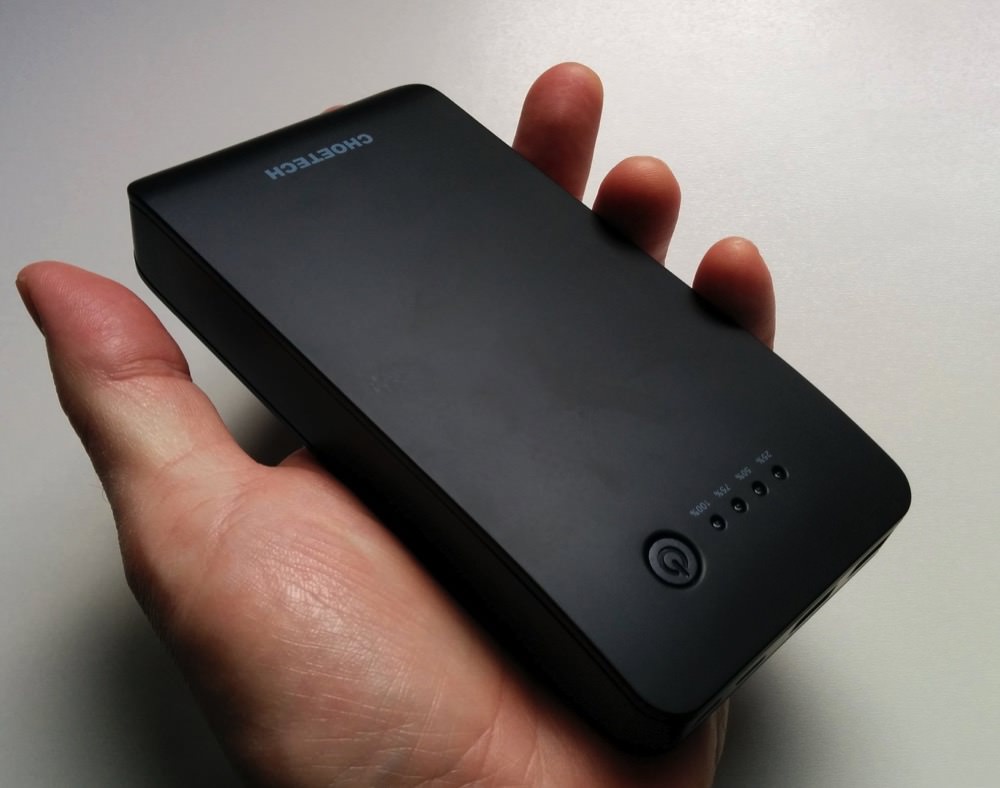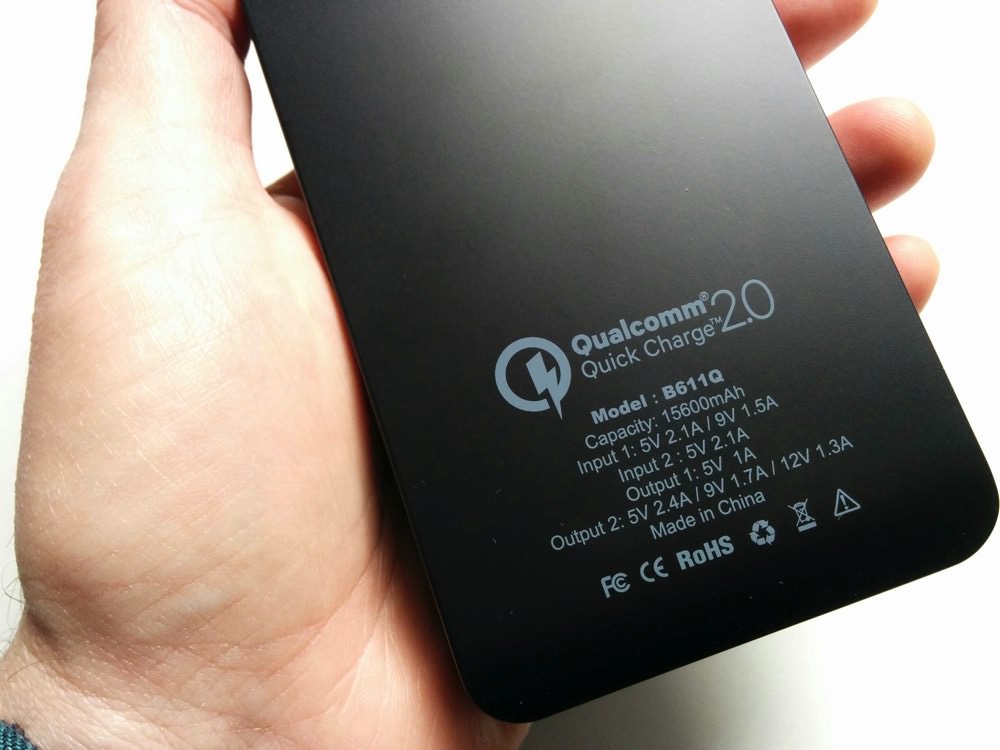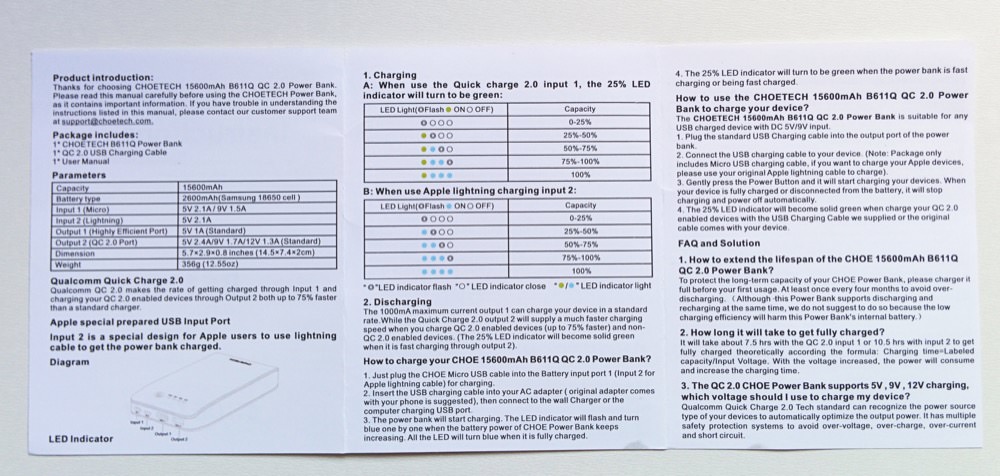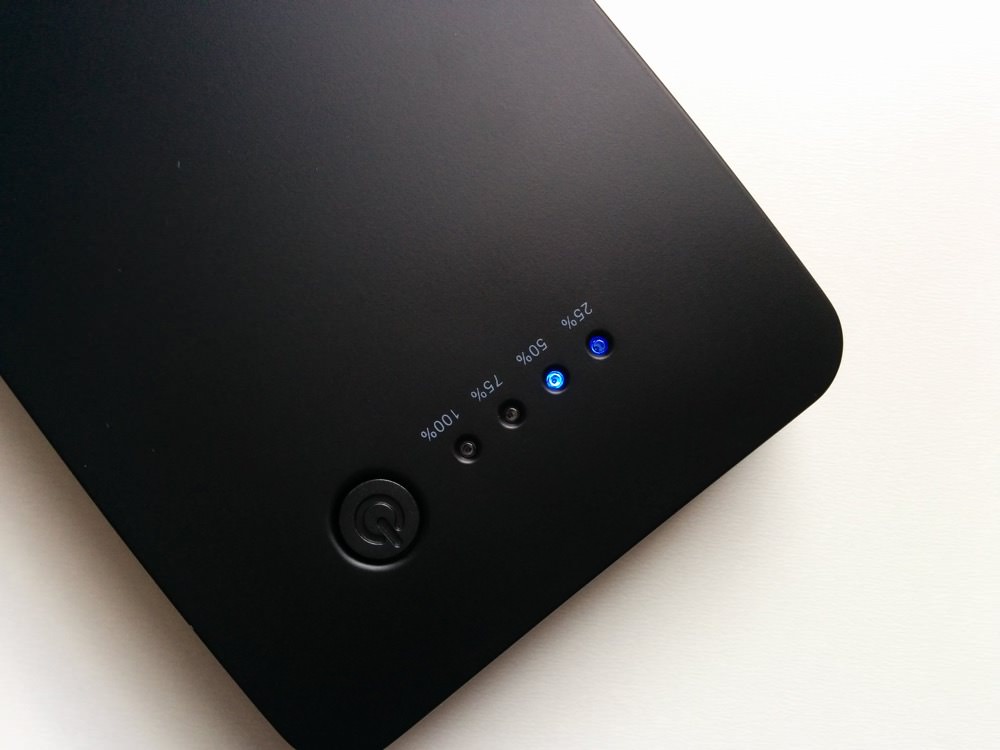Review: Choetech 15600mAh Battery with Quick Charge 2.0
Score:
79%
This review will have to remain relatively short for a very good reason - the unique selling point of the 'Choetech Portable Power Bank' here is that it's 'Quick Charge 2.0'-compliant. And we don't yet have any Windows Phones that work with this intelligent charging standard (though the rumoured Lumia 950 devices will come with it for sure). However, you may well have someone in your family with a suitable device, plus you can use this in traditional fashion to supply charge into any smartphones or tablets up to a whopping 2.4A.
Choetech's charger isn't the cheapest in town, but it's solid and well made - and even accepts Apple Lightning input, should you really not have a microUSB charger to hand to top it up with overnight.

Sold for £33 in the UK, this represents a high quality, decent value charger, even if it's not the absolute cheapest around. The hardware is very undramatic, plain black plastic, though nicely contoured and with rounded corners.

Down at the business end, things get more interesting though. A second input socket looks intriguing and your heart beats at this looking a lot like USB Type C and thus a completely future-proof accessory - but then you read the instructions and realise that this is an Apple Lightning socket - making this equally applicable across the microUSB and Apple worlds, I guess. But how hard would it have been to make this Type C, or even have a third input for this - now that would have been future proof!

The blue USB output port denotes the one that's Quick Charge 2.0 compliant - it's rated to 2.4A at 5V, so will charge most phone batteries in not much more than an hour at best case, and with a significantly faster initial charge period for compatible devices, The other 'normal' USB port can supply 1A, but in practice you charge a phone from either and a tablet or QC 2.0 device from the blue one.

Happily, all of this is spelt out on the back of the Choepower power bank itself, including the current output at some of the higher Quick Charge 2.0 voltages.
Slightly confusing are the instructions (shown below) in terms of the way the LEDs are used. The first one is blue and green, i.e. it can light up in either colour, and the instructions (reproduced below) seem to indicate that it comes into play when charging up the power bank via microUSB (i.e. 'input 1'). However, as per the informed comment below the review, it seems that this only applies when charging the Power Bank from another Quick Charge 2.0 source:

In practice, with a standard phone charger, all you'll see is blue when charging (via EITHER input - I tested Apple Lightning too!) - though you will see a flash of green when pressing the main power button to self test the LEDs and reveal the power bank's charge status. These are arranged in now traditional 25% increments:

There are two kinds of power bank, it seems - those which start charging automatically when you connect something - one presumes that a circuit is kept powered up for this detection and that, as result, there's a low level power drain from the main battery. And those - as here - which remain inactive until a human being comes along and presses a button to say 'Start charging now'. So, in theory, the Choetech Power Bank should be good for many months in a car glove box or similar without too much charge leakage.
The quoted capacity is 15600mAh, but remember that this is at 3.7V (i.e. the internal Li-Ion cell voltages) - the actual charge available at 5V will be around 12000mAh. Allow a little to be lost in transfer efficiency and this is still enough to fully charge a Lumia 930 at least five times from scratch. These high capacity chargers' roles in life do seem to be in a family or business environment though, i.e. expected to be handling several smartphones (from various OS), maybe a tablet and maybe a portable games console or two. The accessory comes with a vanilla microUSB lead, so you'll have to remember to bring along any other 'USB-to-?' cables, as needed. Probably for the best, Apple devices, in particular, are very fussy about the cables they accept...
In summary, I liked the solidity of the accessory, the price is very reasonable, the dual (i.e. in and out) Quick Charge 2.0 facility is unusual but welcome (I'm sure we'll see other chargers this year appear with the technology) and the Lightning input option... quirky. Though, living in a house of iPhone owners, maybe even I'll get to need this one day, in an emergency!
I'd still have preferred a Type C USB input option though - the new Lumias (October 6th) will have this connector/charger, in addition to the Quick Charge 2.0 compliance, so this would have made the perfect companion accessory. Ah well - it's still recommended and a great emergency power source.
Reviewed by Steve Litchfield at
